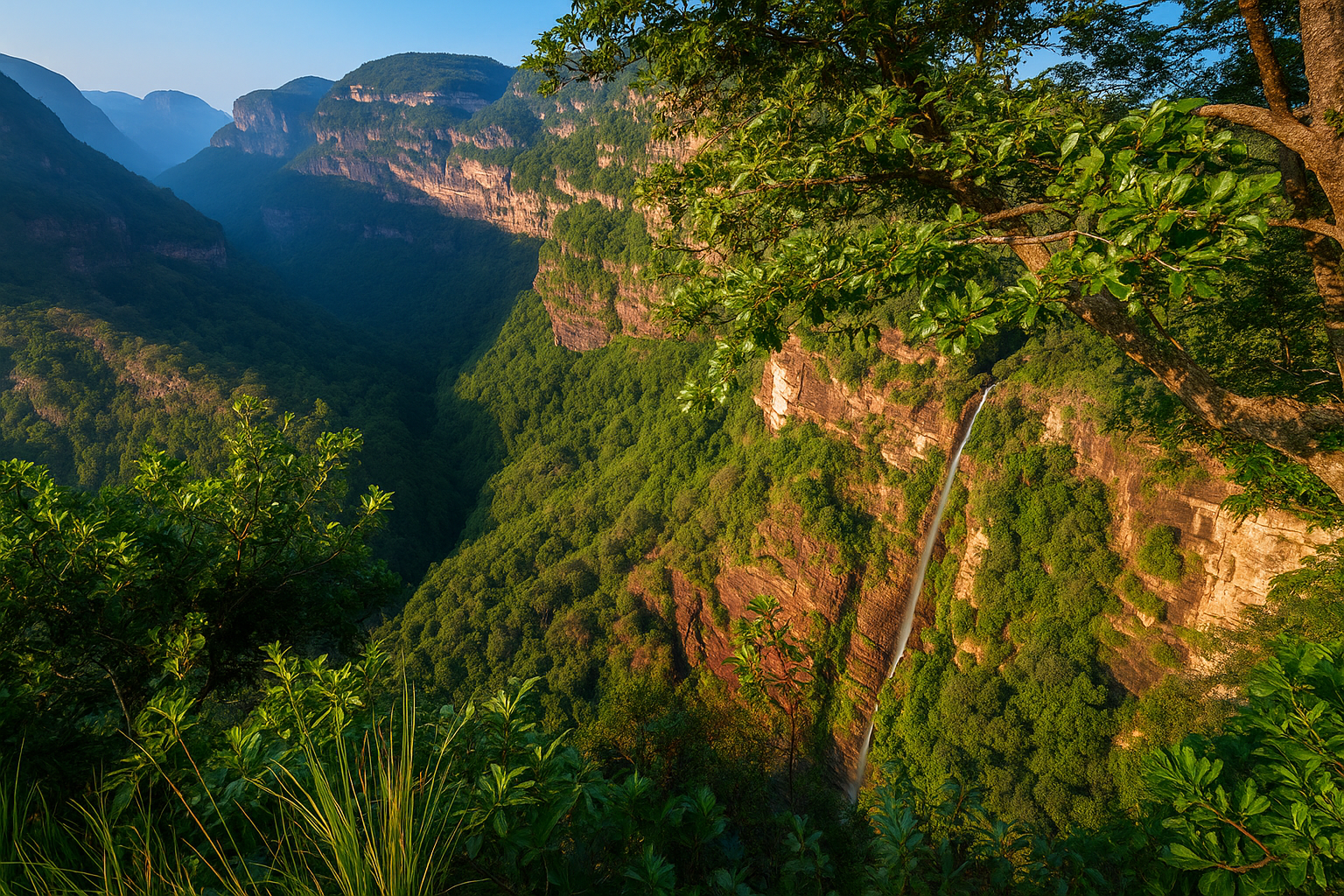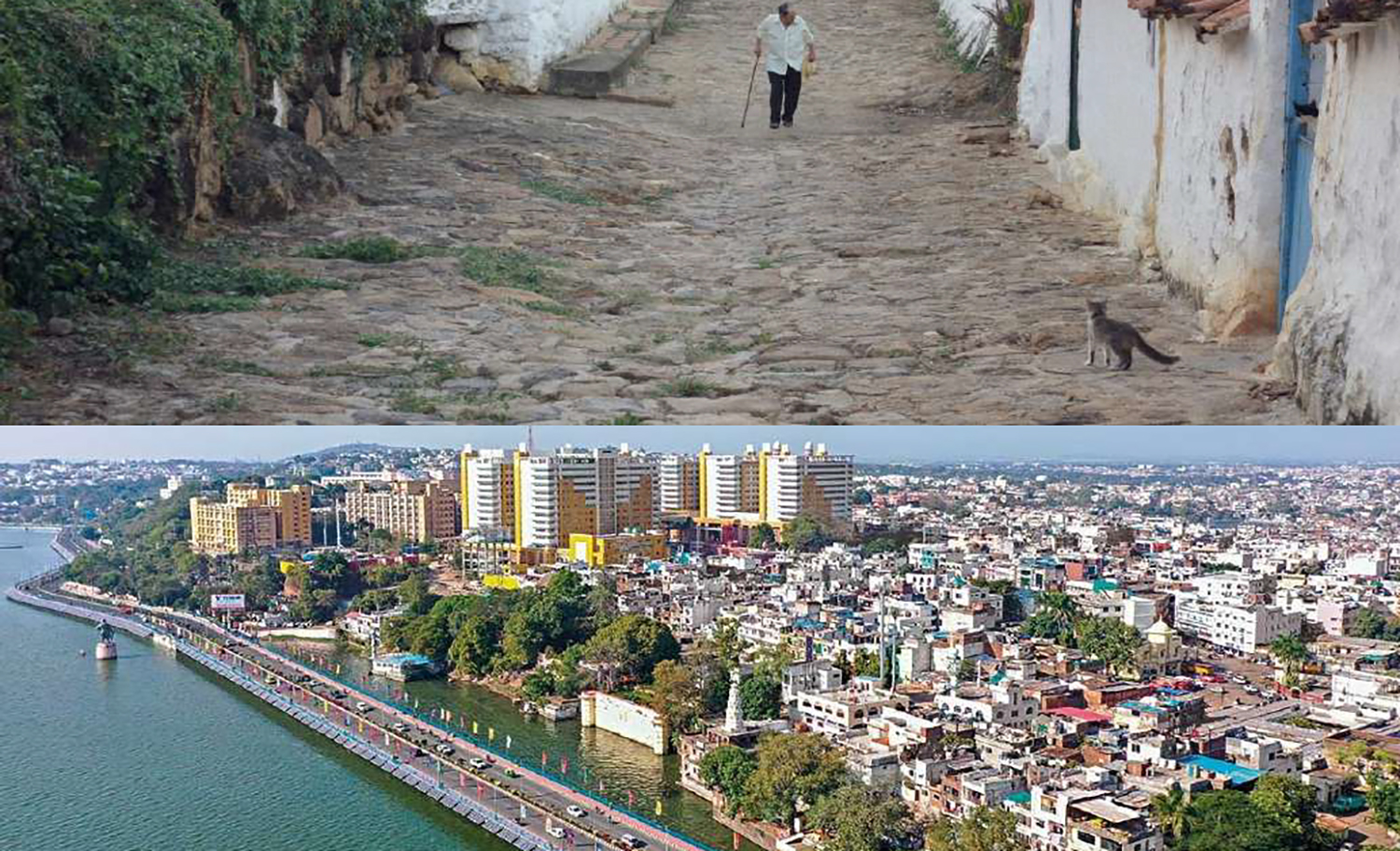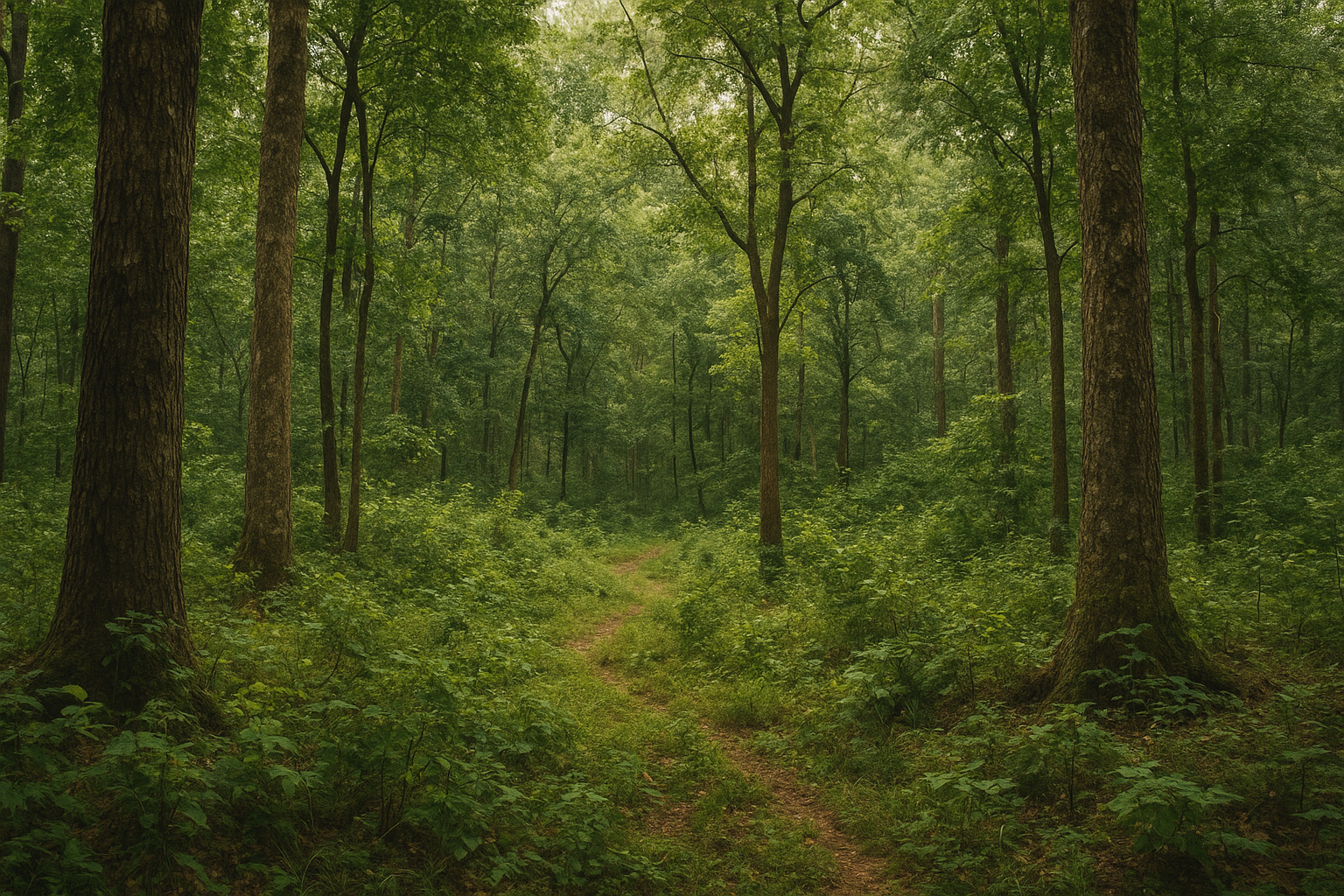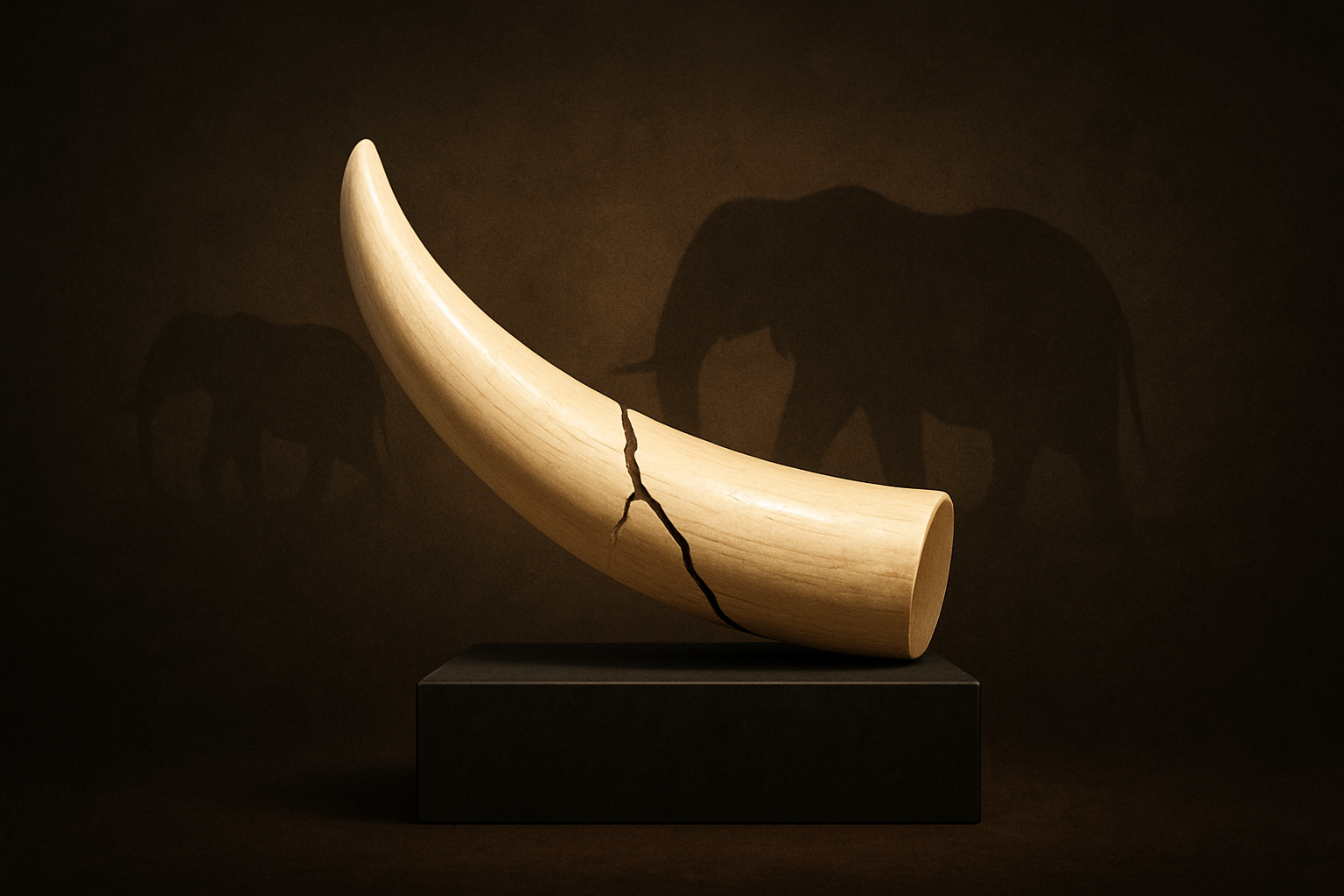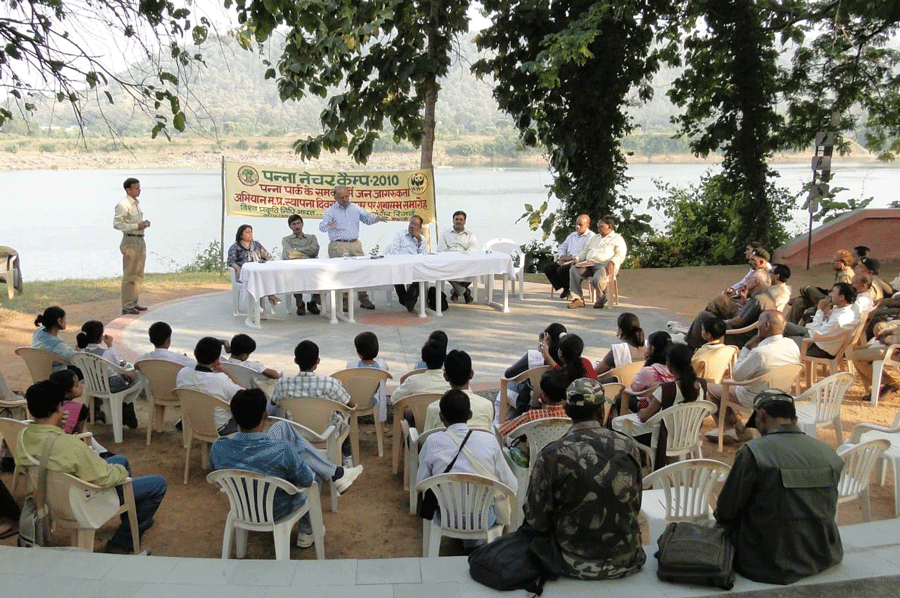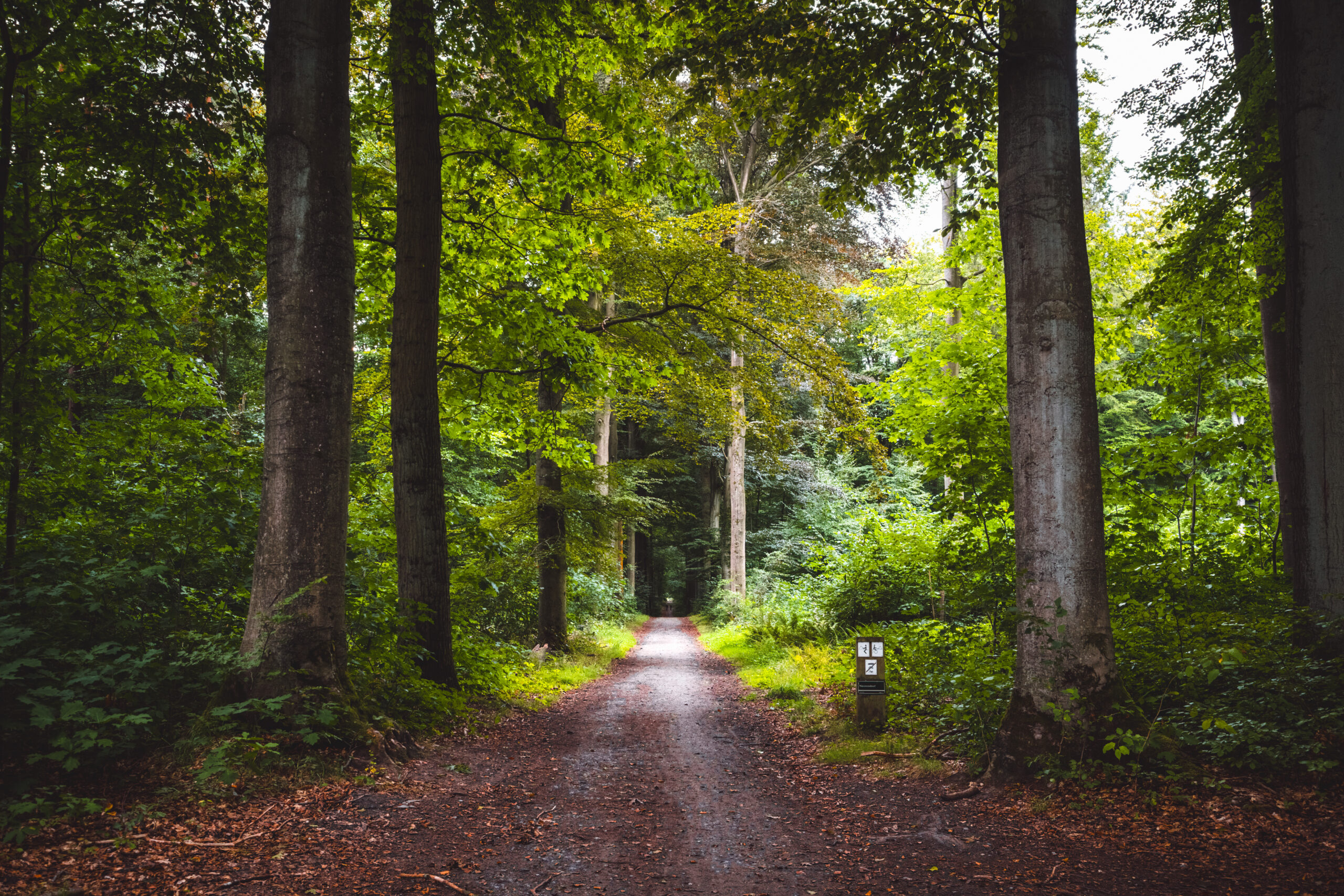LOOKING BACK AT FIFTY FOUR YEARS IN FORESTRY FOLD
H.S. Panwar (IFS Retd.)
It was in 1957 that I went to Indian Forest College for my my AIFC Diploma and in 1960 was posted to Umaria Division under a very able and willing guru Shri R.P. Shrivastav. I then spent four and a half years at the Forest Headquarters in Rewa as Assistant Forest Utilisation Officer most of it under another real and sharing guru Shri S. S. Shrivatav. In 1966 I was promoted as DCF and posted as DFO North Mandla and held charge also of South Mandla Division for over a year, which exposed me to Kanha National Park. I was moved locally to South Mandla essentially for my perceived suitability for Kanha, but upon my pleading to make Kanha larger and make me Kanha’s Director for a longish tenure I was transferred to Dewas in June 1969. In Dewas I lasted for just fourteen months only to be drafted back at Forest Headquarters in Bhopal supposedly for strengthening the new venture in timber trade nationalization. Much to the chagrin of my seniors I went as a homing bird back to Kanha in mid 1971 having been delivered in exactly nine months from Bhopal as the first independent Director of Kanha, where I spent ten years including as Field Director of Project Tiger, which was launched in 1973.
In 1981 I was deputed to Centre as Director for Project Tiger and in 1985 through UPSC was picked up to become the founder Director of the new Wildlife Institute of India at Dehradun where I spent nine years. In 1994 I undertook an UN-FAO assignment as Chief Technical Advisor to the Department of Wildlife Conservation of Sri Lanka, where I spent in all four and a half years in Colombo touring also the parks that were not disturbed by insurgency. Finally I have settled in Gurgaon and continue to remain involved with the forest-wildlife sector.
It is difficult to summarize these long innings in a single article and I would confine myself to the salient aspects of MP forests and wildlife. Before I begin I do lay a claim to be the main instrument in the process of not allowing wildlife management to separate from the forestry fold, for which there was a strong move in the 1980s when the new Department of Environment was created in Government of India. This conviction stems from my firm belief that while specialization in different forestry sectors is highly desirable and needed, dismembering is the surest way to compromise India’s ecological security without which country’s development in any sector cannot be sustainable. This also emphasizes the continued close coordination now and for all times in future among all wings of the forest department.
Madhya Pradesh Forests
MP forests are diverse and spread through the sprawling ranges of Satpuras and Vindhyas and, in association with those in Chhattisgarh, provide watersheds of critical significance not just for the two states but importantly also for all adjoining states of India around these two states. This accounts for over a third of the whole of India. This is the single most vital reason for securing these forests. Both states have valuable timber, bamboo resources, a wide range so called minor forest produce (vanopaj) and an enormous spectrum of biodiversity typical to the ‘Central Highlands of India’. This biodiversity resides in both some relict specimens of ‘old growth’ forest ecosystems in several national parks and sanctuaries and in the ‘secondary’ ecosystems in managed forests and pastures as well as a huge network of stream and river banks. These forests include some of the best specimens of moist and dry deciduous forests in the country with unique stands of teak, sal and mixed forests with bamboo as a strong complement. The rich water regime directly attributable to the forests, and the forage and vanopaj attributes are an enormous contribution for the local communities. All these ecological services and products are taken for granted, often without realizing the role of forests and with more professed than real conservation support in the overall framework of development and governance.
Nonetheless, these vlues enhance the cause and the reasons for the conservation of forests in Madhya Pradesh. I say so with full conviction but must simultaneously add that this cannot be achieved unless the wellbeing of the forest dwellers and the forest side communities is also concurrently ensured. A range of Central and State schemes support this objective also in respect of forest dwellers and forest side communities as a part of the overall rural development and tribal welfare programmes. But I must maintain that no sustainable wellbeing can be delivered unless the forests around them are in a good conservation state. This is so because the productivity of their farms and animals depends upon water, vanopaj (including bamboo) and some timber resources, all of which derive from a well conserved. forest status. Thus while recognizing the forest rights of these communities one must lay emphasis on the mode in which these are facilitated. Rather than emphasizing on land, perhaps a share in forest revenues including timber and preferential employment in forestry-wildlife sector seem to me better ways in which sustainable wellbeing can be ushered. The share in revenue and use of vanopaj in return for rights should mainly be invested in ecodevelopment of the concerned villages including improving farmland of right owners and provision of sound animal husbandry that aims at reducing livestock numbers while enhancing economic returns. Likewise beneficial engagement in ecotourism in parks and other forests is another benefit that must be extended to these communities. Naturally this needs to be done in responsible participation with real stakeholders.
Wildlife and Biodiversity
Madhya Pradesh is widely and rightly recognized as the tiger state of the country and has generally been the torch bearer in wildlife management. I do not wish to recount the various associations of animal and bird communities but would surely say that the State, given the varied land forms and the bioclimatic environment, carries diversity and attributes typical to the central part of India in terms of wildlife and biodiversity from east to west and north to south. All these values are but an integral component of our national values in this domain. Kanha has the distinction of harbouring the relict population of Barasingha paradoxically called ‘the hard ground swamp deer’ and has demonstrated how a species on the threshold of extinction can be saved. Bandhavgarh, Pench, Satpura and Panna are other notable tiger reserves, especially the former two along with Kanha that have demonstrated how good management can establish parks of distinction. I am heartened by the news that the State Wildlife Wing has translocated a good sized herd of gaur from Kanha to Bandhavgarh restoring a lost attribute to the latter and that it is planning to take barasingha to Satpura. This is the innovative way in which the shrunk distribution of several species can be at least partly restored. But this must be subject to a rider that the management of the proposed host park is competent enough to host such an activity especially if the species happens to be in the highly endangered category.
Panna after its recent and sad loss of tigers has successfully restarted a tiger population with contribution of two females from Kanha and Bandhavgagarh and a male from Pench that have bred to the delight of us all. This operation distinguishes Madhya Pradesh as a similar operation in Sariska tiger reserve of Rajasthan though initiated some years back has failed as yet to yield the progeny. While kudos for Madhya Pradesh can be rightly claimed, the lessons from Panna loss of tigers in a short and recent period from a thriving and structure wise sound population of over thirty tigers must not be forgotten. Panna Report to which I am also a signatory describes these lessons in detail but I would just mention the following cautions and management steps needed to prevent recurrence of such adverse events in future that, as in the case of Panna, tend to tarnish the Department’s image through media trial. There is no dearth of pseudo conservationists and even scientists who even on half truths and misinformation contribute with glee to such smear campaigns. The salient points I make are:
1. When tiger breeding is good in a small park without a viable buffer zone, the adverse possibility of ‘population stress’ caused by an increase in upcoming adult males as manifested in frequent cub killing to the acute predicament of tiger mothers is to be expected. Among other reasons this was a strong factor in pushing out such mothers and cubs to the sure fate of poaching outside. Heightened internecine fights, leading to tiger deaths beyond the natural level, is another signpost of such a population stress. This emphasizes the need of close monitoring of tiger population in terms of sex ratio and structural age profile, which is neither possible by ‘camera trap’ technique nor is it practicable to put radio collars on a larger segment of the population. Similarly, genome based method of tiger identification from collected samples of tiger feces needs help from a competent genetic biotechnology laboratory, which again is beyond ready adoption by reserves for this purpose because of the sheer cost involved.
2. Three lessons emerge from this likely eventuality in successful smaller reserves:
Earnest attempt to set up well protected and managed buffer zones in full beneficiated participation of communities must be made, where dispersing sub-adults can find shelter until gaining adulthood. This is vital for replacement of ‘core population adults’ as they become older. (I admire the ongoing attempts to set up such buffer zone around Panna).
In smaller successful reserves with little potential for viable buffer zones timely relocation of identified sub-adults for relocation so as to restock the depleted parks and sanctuaries has to be undertaken. This eventuality can be foreseen also from smaller reserves with buffer zones, based on the indications from close population monitoring.
In any case such relocations of tigers would be needed as a scientific requirement for genetic exchange as it is most unlikely to take place through long ranging tiger movements between reserves, given the absence of viable corridors.
The only method of sustained annual monitoring of population that can succeed is the pugmark method. It has been conclusively proved that tiger pugmark is a true signature for individual identity and science has advanced to a stage where pugmarks can be photographed by using stereoscopic color imaging under standard conditions with the use of specifically designed stereoscopic camera equipment. Software for image interpretation, specially evolved for this purpose, can then yield the standardized pugmark measurement parameters, much in the way of satellite image interpretation as used in geographic and thematic mapping. These parameters in association with the measurement of stride and ‘straddle’ (horizontal distance between left and right pugmarks, at right angles to the direction of walk as measured from a good pugmark trail) can again be analyzed by computers to cluster pugmarks of the individual tigers in separate clusters and also lead to their sex identification. It is a happy augury that Madhya Pradesh is supporting this ongoing research. My sincere compliments area due to the State on this count as this will fulfill my long term cherished scientific desire of landing a strong scientific tool in the hands of field managers.
Forest tracts needing special conservation attention Surely there are numerous other tracts that merit being included in this list but I will limit myself to the following of prime value to my mind.
1. Kanha – Pench – Satpura – Betul: The first three are tiger reserves and Betul a forest division linking with Melghat tiger reserve in Maharashtra. Ongoing genome based tiger research has shown that Kanha and Pench have a strong connectivity with a revived tiger presence in the forests in between. The tiger link further west is presently under study. But, what is more critical is the prospective better forest conservation not necessarily only for the tiger, but for the sake of these Satpura forests providing an essential ingredient of water security for the region.
2 Laugar-Khara: These are two contiguous reserved forest blocks of Balaghat district and their conservation value derives not so much from serving as a link connecting Kanha and Pench. Their real value arises from their donning in perhaps the best specimen of mixed forests with bamboo in the whole of Satpura Range in Madhya Pradesh and Maharashtra. Another unique feature, perhaps in Laugur Block or somewhat outside towards Lanji, is of the only ‘forest swamp’ that exists in the whole of Satpura and Vindhyan Ranges.
3. Bandhavgarh Katni Panna -Chhatarpur: Like Kanha-Pench connectivity these forests also represent transition from sal to teak as the dominant forest tree species. Further forest connectivity with Damoh, Sagar, Narsinghpur on to Seoni can be kept as a prospective goal, again from the water security services of this sprawling tract. Gaps in between do not count for much as real the value lies in hydrological and biodiversity conservation.
4. Kuno-Shivpuri – Chambal – Kela Devi -Ranthambhore: All these are protected areas, the last two being protected areas across Chambal in Rajasthan and the former three are protected areas of Madhya Pradesh. Among them these represent an excellent specimen of dry deciduous forests of the Vindhyas. The forest tract within Madhya Pradesh has good overall ecological value. If one looks at the forest map of India, this is the only sizeable ‘green patch’ in an otherwise desolate expanse in the region.
Reminiscing
How does one, with a multitude of events of significance experienced in all sectors of forest-wildlife sector choose for a short write up like this. I will hence include just a few, related to wildlife, dotted around in my long innings.
1. First ever large wild cat encounter: I was a probationer in Umaria Division and was engaged in laying out strips for the then famous ‘van sudhar yojana’ perceived by the then CCF Shri. K. P. Sagariya. Alternate strips were to be cleared for planting and for tending under ‘coppice with reserves’. I was camping at the forest inspection hut at Ghunghuty in the back of the railway station and used to cycle down alone seven kilometers every day for the task. One evening dusk time as I was returning I allowed my cycle to accelerate down the gradient of a small nala crossing so as ease the peddling effort on the ascent across the culvert. As I looked up at the onset of ascent, I saw a huge leopard standing across the road in mid slope and staring at me. As a green horn I was at a loss as to what to do. My reflexes did the rest, I braked the cycle and stood still with one foot on the ground. The leopard did not budge and I thought of my end early in life. After what seemed to me to be an eternity, but must have been under just a minute, the leopard relieved me by crossing the road and melting away into the forest. I must have waited for few minutes but then hurried back to the safety of the inspection hut. That was my first real encounter with a carnivore in my carrier and gave me a lesson when I reflected on the event in the verandah of the hut. ‘If you don’t fool with a large wild cat it won’t harm you and leave you alone, if shocked a little’. This was later reconfirmed umpteen times in my carrier. Only a couple of days work was left and I finished it politely turning down the staff offer to put me up at the local forest guard’s quarter.
2. Tiger a real gentleman: As Field Director in Kanha I was on my way from Mandla to Kanha and stopped by Kisli. I saw an empty bullock cart coming from Kanha side and the staff told me that it was returning after dropping park-elephant rations at Kanha.
I continued my wagoneer ride and came across an educating rare phenomenon of tiger behavior in about a kilometer of road stretch, half a km beyond Kisli. First just the cart tracks for half a km, then tiger tracks showing movement of the animal towards Kanha run over by those of the cart over some 100 meters. Then just cart tracks again for a distance of some 100 meters. Then finally and queerly, fresh tiger tracks continuing again uninterrupted overlaying the cart wheel tracks for well over a km. The climax was, we saw a good sized tiger jumping off the road and disappearing in the forest along the deep steep terrain of the banks of the dry nala. Now the interpretation – Half a km from Kisli is quite disturbed by staff quarters and it is rare to see a tiger here in late morning. So, the bare cart wheel tracks. Later unaware of the tiger presence, the cart man trampled the fresh tiger tracks with the wheel tracks of the bullock cart. But the tiger, sensing the cart movement well in advance, left the road alone for the cart to pass and continued his traverse inside the nala running along the road descending from Kanha. After the tiger saw the cart having moved away he resumed his journey on the road, as evidenced by a stretch of the bare cart tracks and then a continuing stretch of tiger tracks overlaying those of the cart wheels. Finally, though he must have sensed our vehicle approaching from a long distance, only when we drew near did he leave the road. That’s how my driver Rajaram and I saw the tiger jumping off the road. What greater evidence of the gentlemanliness of tiger allowing us the right of way?
3. Jumman Khan, a pious, steadfast, proficient and honest forest foot soldier: Educated only up to Primary level, and recruited as forest guard may be in the 1920s in Sagar, he found his way to Kanha in the early 1950s. Apart from above rare qualities, by sheer will to learn and by application, he had become quite a competent forest civil engineer. His knowledge of forest and wildlife ran as deep as his familiarity with forest herbs. His values saw him steadily rise and he came to be elevated on an ex-cadre park post equivalent to a Ranger. He often accompanied me on civil work planning and sometimes on tracks through the forest. He was well up in the upkeep of park elephants too – in all a very valuable park employee. We had a tusker named Deobahadur gifted to the park by the Surguja Maharaja and with it came an elephant attendant claiming to be his mahaut. But Deobahadur hardly obeyed him and he ill treated the elephant ceaselessly. As a result the tusker became far too aggressive and had to be chained with the help of other camp elephants and mahouts. One day Deobahadur broke his hind leg chain and ran away. While our searches proved futile, it was captured in a very critical health and almost in an immobile state with a festering wound in the right leg, by a temple mahant in Rajnandgaon district. With knowledge of elephants and medicines the mahant cured the elephant. Finally, upon getting the news after many months our staff got back the elephant after compensating and thanking the mahant. Deobahadur was then entrusted to an experienced mahaut (Imamuddin) of the park who trained it as a forest park elephant. The tusker was gradually allowed to accompany other park elephants on tiger tracking and viewing in the way of the pioneering skills first developed in Kanha. But no tourists were allowed on this tusker for a couple of months. Finally, we felt it was ready too for tourists but we needed to test this. One day Jumman Khan and I went on Deobahadur with the park elephants and gradually took the elephant closer to the tiger. But as tourists were ferried on other elephants, one other park elephant and our Deobahadur kept the track of the tiger. Eventually we asked all other elephants to start ferrying tourists while we stayed alone with the tiger on Deobahadur. This went on for well over an hour and I could take good tiger photos With three other park elephants with tourists around the tiger, Deobahadur continued behaving impeccably. Then suddenly for no reason the tusker panicked, trumpeted and bolted out of control through the forest. We held ourselves with great effort on elephant back, I along with my camera and Jumman Khan with my camera briefcase. However, when we came inside a young pure stand of sal poles, Jumman Khan lost his perch and in the process he fell from the hauda. But his right foot was caught by the chain of the hauda footrest and he was dangling inverted somehow saving himself from the saplings as these were parted by the bolting tusker. At last Jumman Khan’s foot got released and he fell off. Even though highly apprehensive of Jumman Khan’s condition, I could hardly do a thing in the midst of the saplings as the elephant continued to bolt. Shortly we came upon a grassy patch and I jumped off Deobahadur who also stopped forthwith. I ran towards Jumman Khan, only to see him coming towards us with my camera bag in his hand as I entered the sapling patch. I was relieved and asked him about himself. He showed me his injured ankle having a deep gash, to which on the spot he had already applied a forest herb. Bleeding had stopped and he looked in fine fettle. With his courage as an asset we decided to take Deobahadur back to the tiger, both of us on the hauda. Stayed with the tiger for another hour and Deobahdur remained on his best behaviour, becoming a valuable asset to the park. Such was Jumman Khan and this is but one example of his endless contribution to Kanha. Several engineering structures including anicuts in the park stand testimony to his skills. Alas! Jumman Khan is no more but his legend in Kanha lives on.
4. Prime Minister Smt Indira Gandhi’s four and a half hour midday visit to Kanha: It was January 1985 when her helicopter landed at a makeshift helipad near Kisli at 11 AM, I having come from Delhi especially for this visit at the behest of the then Chief Minister Shri Arjun Singh. We awaited her at the helipad. I was standing by the open Kanha jeep that was to take her on the park visit. A young tiger male. had been tracked in the forest a km away but had moved with his chital kill to a low hill top encircled by thick bamboo clad slope copiously strewn with broken rock pieces, large and small. She agreed to go on the elephant despite our briefing of the terrain and forest. With her Principal Security Officer and I she rode the elephant and I somehow successfully struggled to keep the bamboo branches from touching her and she did help herself too as the elephant negotiated the tortuous terrain.
Eventually near the top we were eye level on the hauda with the tiger. She was thrilled and stayed on as we shifted the elephant to vantage positions for her view for about fifteen minutes. Finally we moved to Kanha on the jeep and she was able to see another tigress with two grown up cubs from the elephant back in the Chuhri nala open grassland, all this within an hour and a half. She had lunch in the open under the sal stand opposite what once used to be the new rest house (now a museum) and enjoyed hot jalebis. As only stray chital and some birds could be seen on way to Kanha I commented, “Madam you have chosen to come to during the period of the day when we ask our visitors to relax in their rooms, and then only for as many hours as the days we suggest our visitors to stay”. She answered that it was either this visit or not visiting Kanha at all. We all said we are indeed grateful that you opted to come.
After a brief stay we left for a jeep excursion of Kanha meadows and I mentioned to her that in morning or evening we could have seen plenty of other animals including the rare Barasingha of Kanha. I took the jeep in the Kanahri meadow and we stood close to a sal stand with tall grass separating us from another lower grass meadow. I sought her permission to drive through the grass taller than the jeep but which was safe and free from pits or boulders and she readily agreed. Despite the security man restraining me by pressing my shoulder from behind I took the jeep slowly and we soon came across the tall grass and emerged into the opening. My best anticipation turned out to be true and we witnessed a large herd of Barasingha, some resting, some foraging and intermittently engaging in displays typical of the breeding season. She was thrilled again and I was delighted as all the VIPs in the jeep heaved a sigh of relief. Finally we were on way to Bamhanidadar where a larger, Air Force helicopter awaited to take her to Jabalpur for her special plane to take her to Delhi. She was surprised when I told her that she had but seen just five percent of Kanha from the jeep. On Chief Minister’s suggestion I joined the helicopter flight to enable her to take a small tour of the park and besides Kanha Range forests we went about a third of our way towards Supkhar. She was delighted to see the wonderful green forest canopy and appreciated the great Kanha wilderness and happy at our securing green heavens like this. Finally, she flew in time to catch special plane well before sunset, as was mandated because Jabalpur airport then was not equipped for night flights.
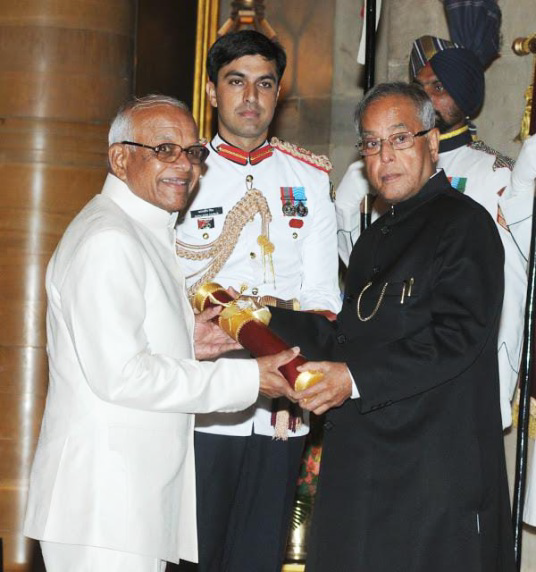
Shri Hamendra Singh Panwar, got Padm Bhushan in 2013. A legendry from foresters fraternity of Madhya Pradesh and pride of India, born in a small village, Tingipur in Balaghat distt. He won several other awards during his life time. Forest officers of Madhya Pradesh and India, may like to know more about this learned man of Indian wildlife conservation.
Other awards:
1981.. Government of M.P. Gold Madel.
1992.. Prime Minister’s Memento at New Delhi.
1996.. Fred M. Parker International Parks Merit Award -by World Conservation Union (WCA-IUCN).
1996.. Tree of Learning Award – World Conservation Union (WCA-IUCN), highest ‘Fred M. Packard International Parks Merit Award.
1999.. Rajiv Gandhi Wildlife Conservation Award New Delhi
2002.. Duke of Edinburgh Conservation Medal at WWF International. Only IFS and 2nd Indian, the other being Prof. M. S. Swaminathan.


